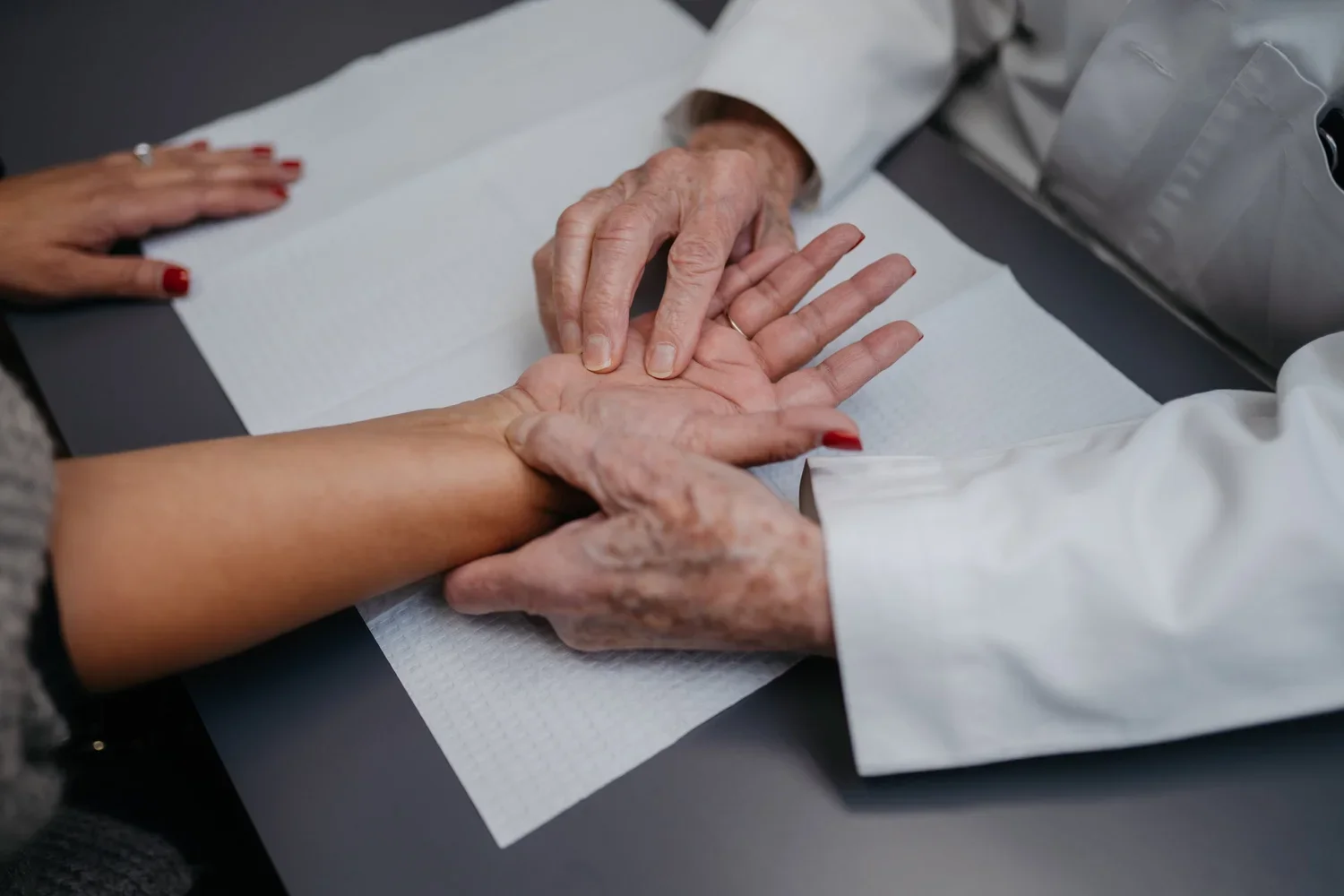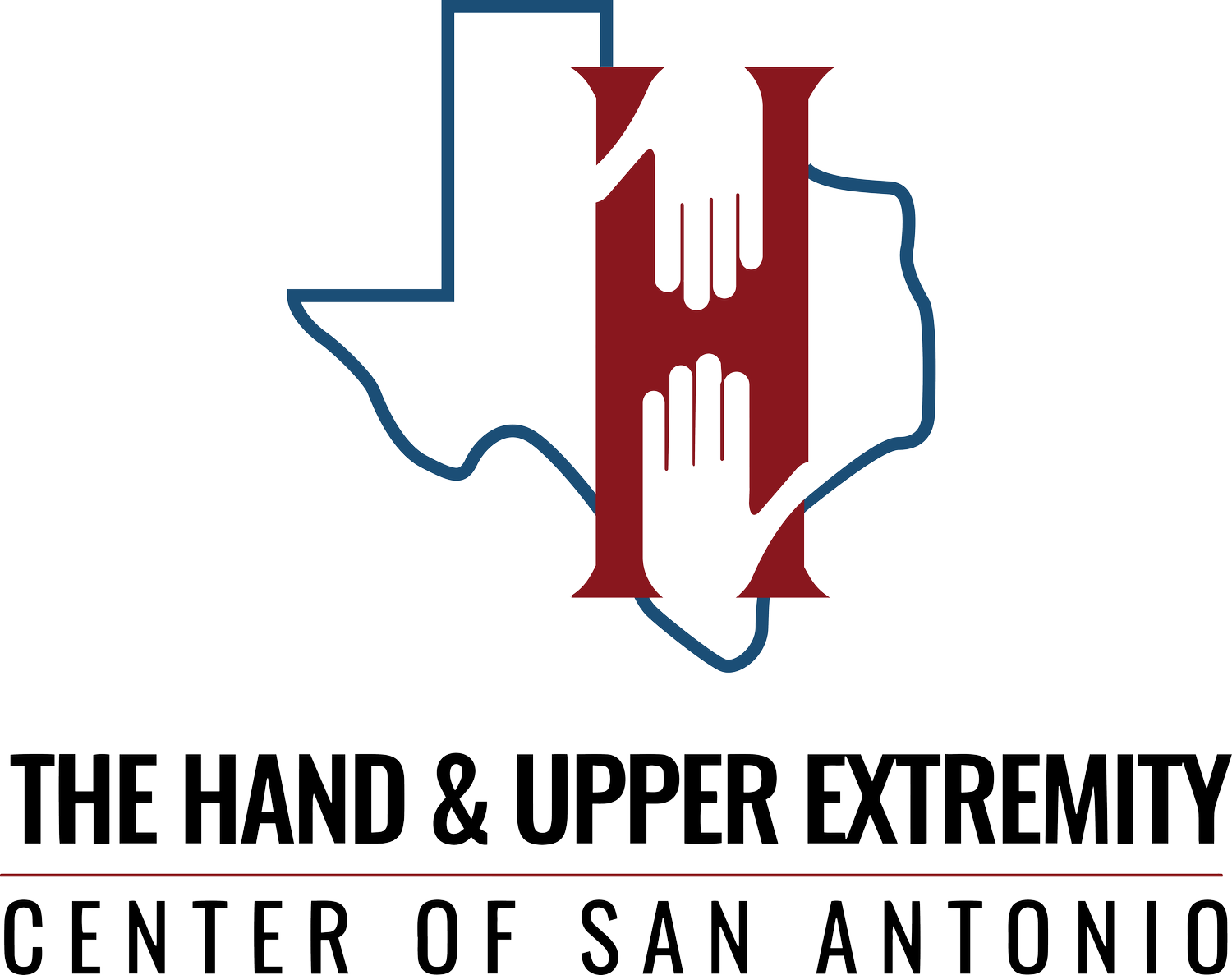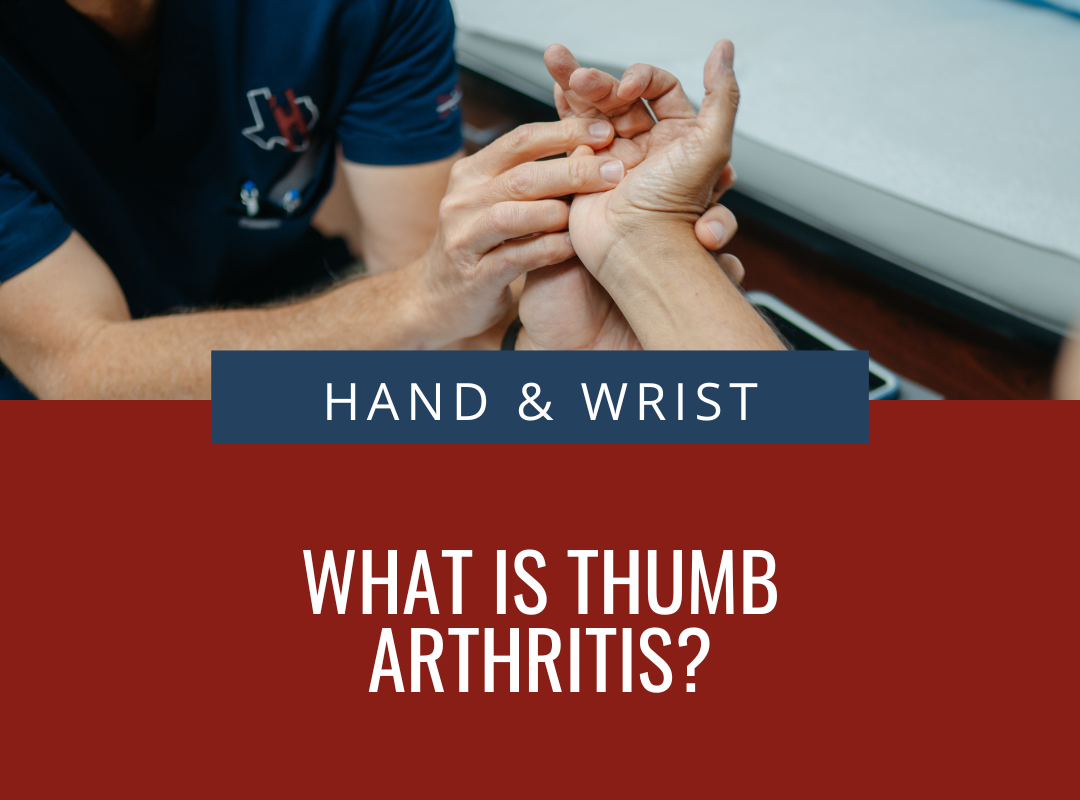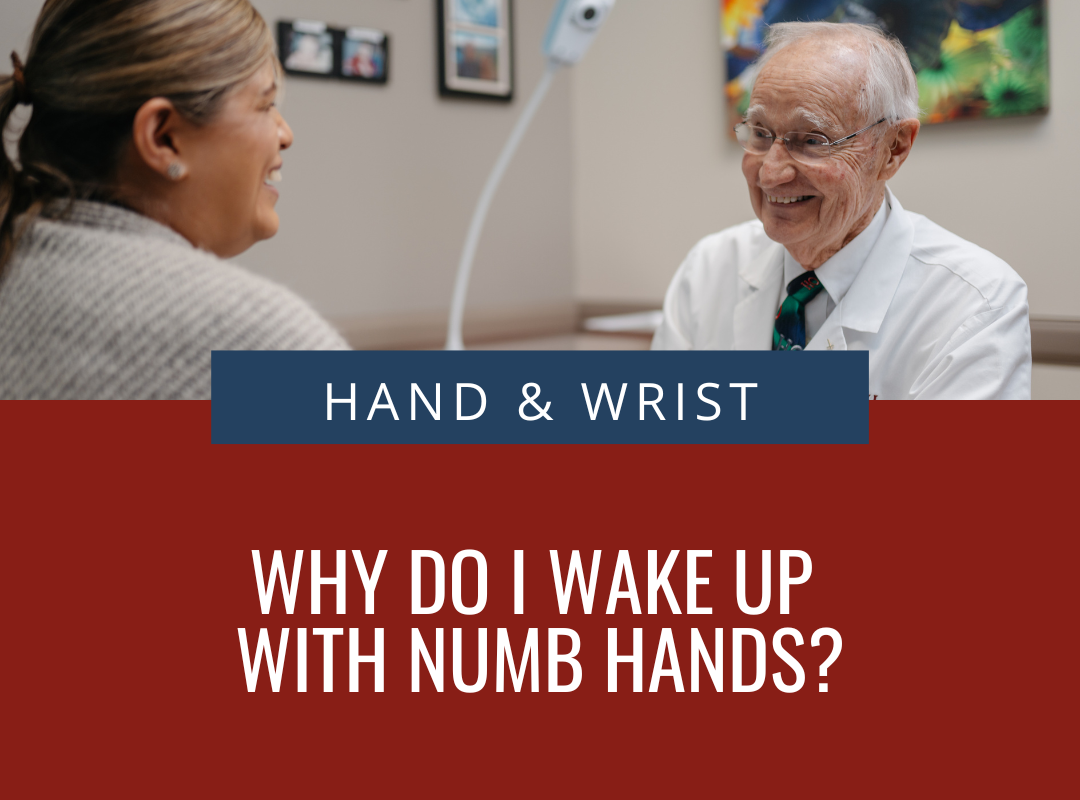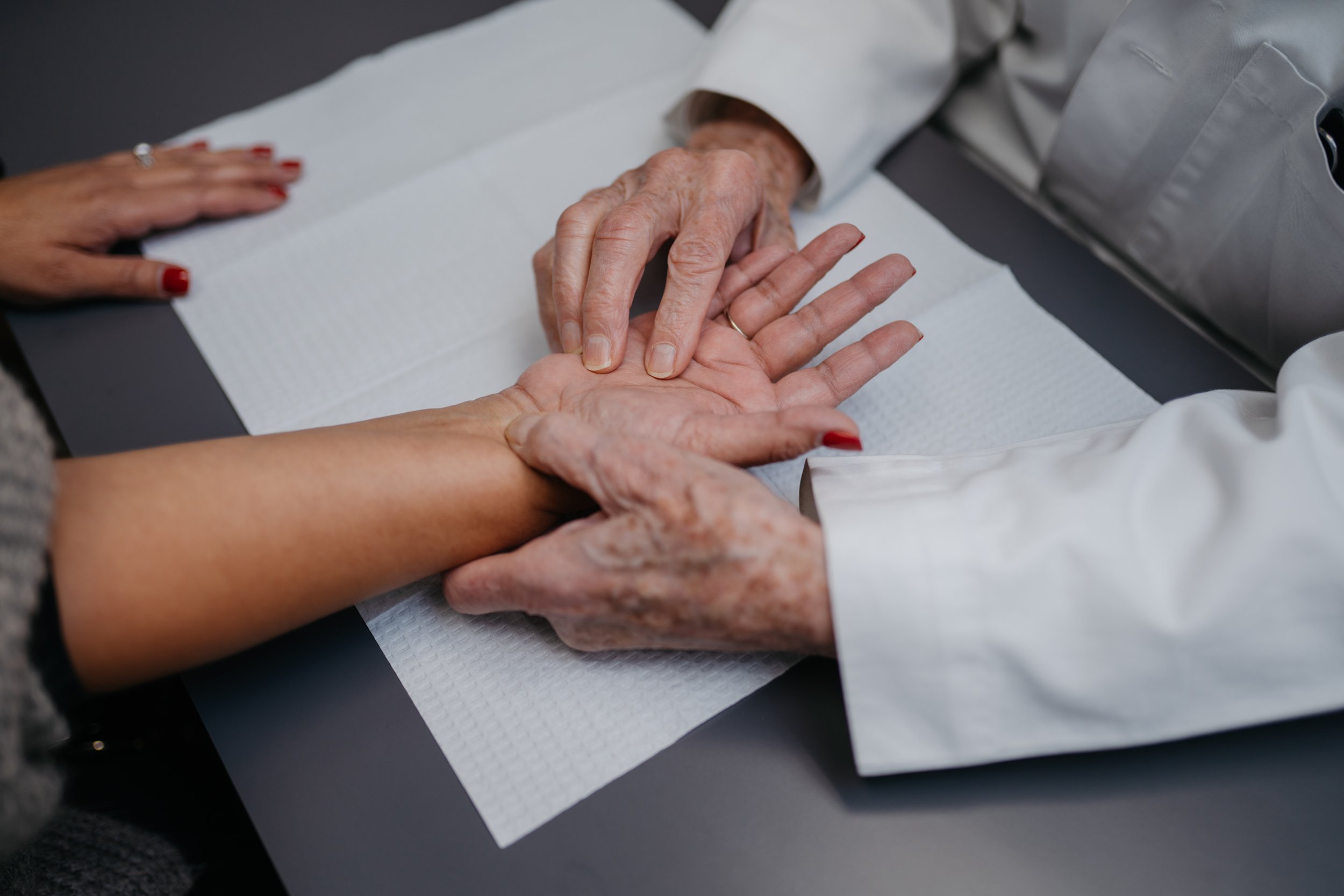
CMC Arthroplasty in san antonio
What is CMC Arthroplasty?
CMC arthroplasty, also known as carpometacarpal arthroplasty, is a procedure that is performed to treat a specific form of arthritis called thumb basal joint arthritis or osteoarthritis. This condition affects the basal joint (carpometacarpal joint) of the thumb, which is the joint located at the base of the thumb where it meets the wrist.
One type of surgery is called a thumb carpometacarpal (CMC) joint arthroplasty. This CMC replacement surgery is done to relieve pain in your thumb and wrist and give you movement of the thumb. It is often done as an outpatient surgery.
CMC Replacement Procedure: What To Expect
If you’re considering CMC replacement surgery in San Antonio, this overview explains how the procedure works, what techniques are used, and what to expect before, during, and after your thumb joint surgery.
Outpatient Procedure for Maximum Convenience
The CMC replacement procedure is typically performed as an outpatient surgery, which means you will be able to return home the same day. Our San Antonio surgical centers offer efficient, proven techniques that minimize downtime while prioritizing safety and comfort.
Surgical Techniques and Implant Options
We tailor the procedure to meet your specific needs. The following may be used by our surgeons:
Ligament Reconstruction and Tendon Interposition (LRTI) — where a small piece of tendon is used to stabilize and cushion the joint.
Suspensionplasty — a technique that helps maintain thumb alignment and mobility without the need for metal implants.
In select cases, CMC joint implants may be considered based on joint condition and patient activity level.
Every surgical plan is developed after a detailed evaluation and discussion between you and your surgeon.
Procedure Duration
Under regional anesthesia with sedation, surgery typically takes one to one and a half hours. Your recovery will be monitored and you will be discharged with detailed instructions for home care the same day.
CMC Arthroplasty Recovery Timeline
-
Initial Recovery and Splinting
After surgery, a splint or cast is placed to protect the thumb and support early healing. This is typically worn for 4 to 6 weeks, based on your surgeon’s recommendation.
-
Hand Therapy and Rehabilitation
After healing, you’ll begin hand therapy to rebuild strength, improve movement, and restore everyday use of your thumb and hand.
-
Returning to Activities
Light daily activities usually resume within 6 to 8 weeks, while heavier tasks like lifting or sports may be cleared by 3 to 4 months, based on your recovery progress.
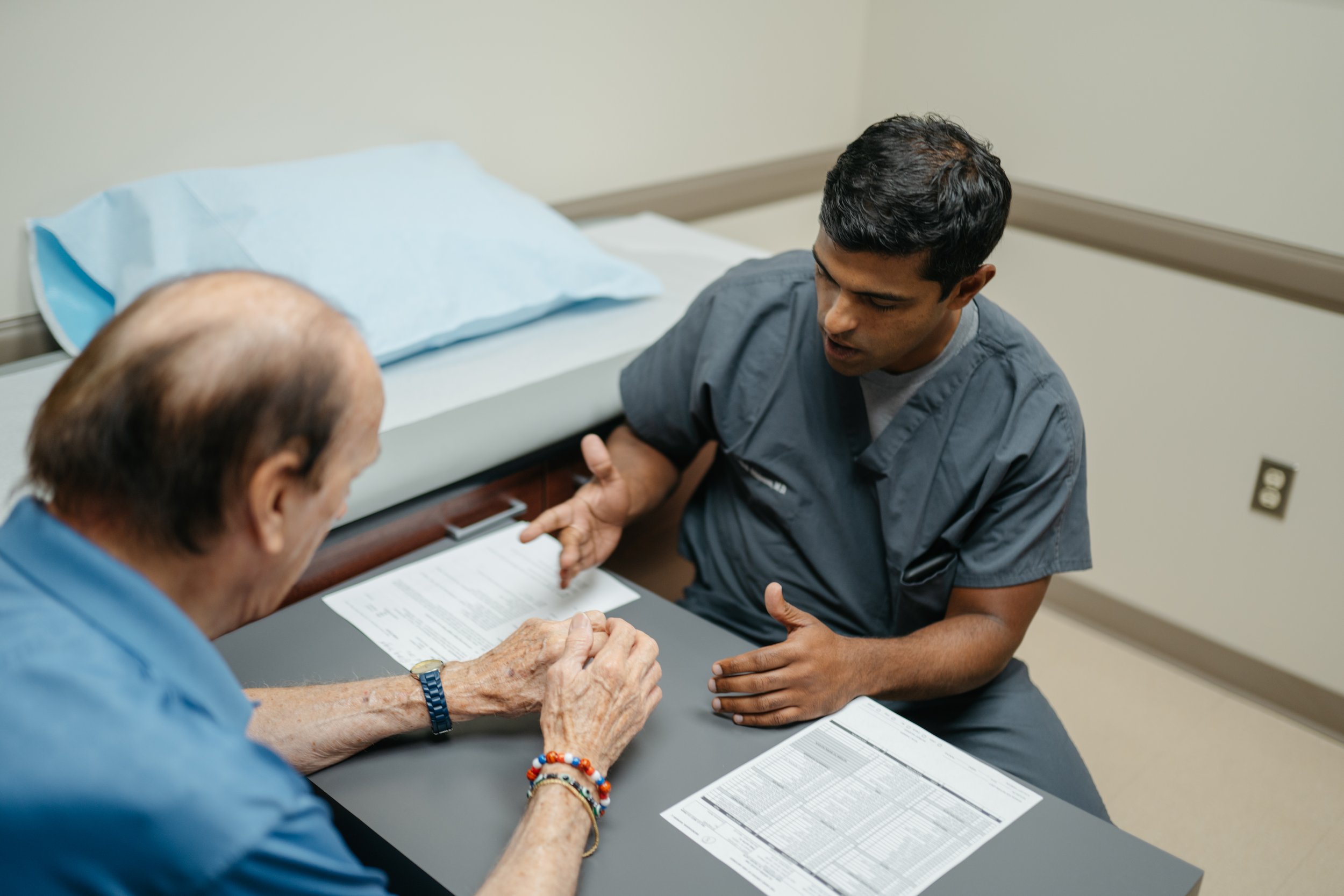
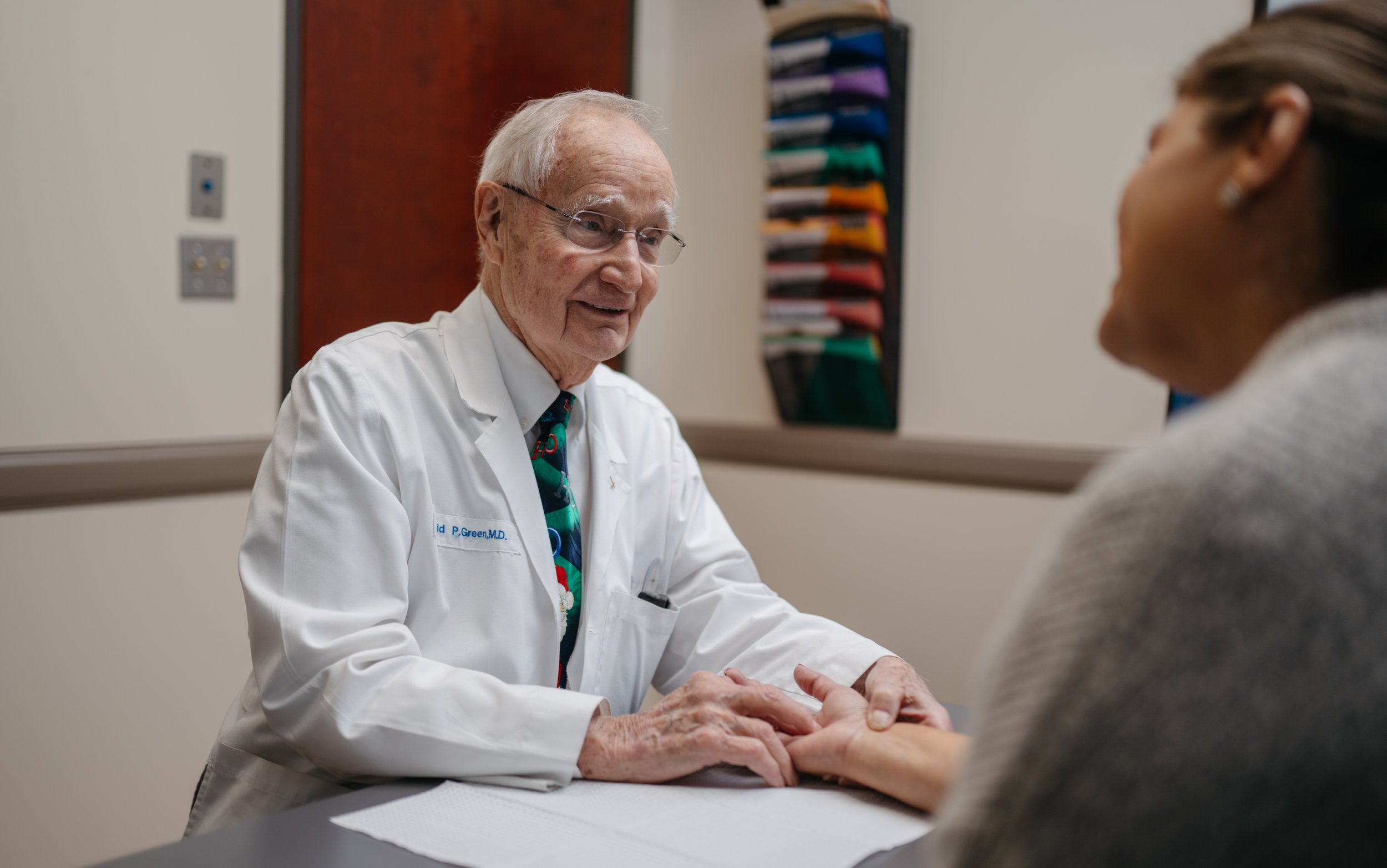
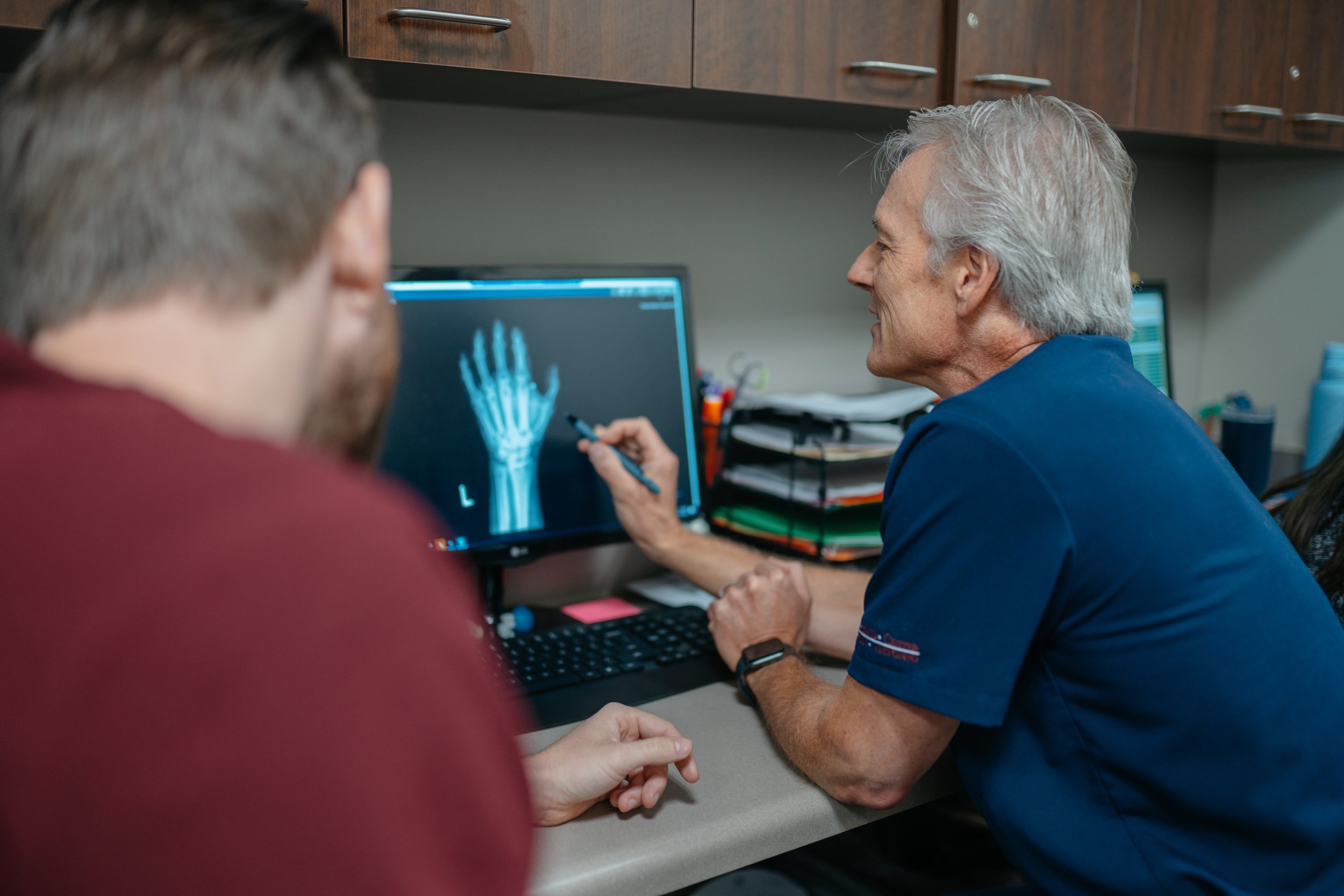
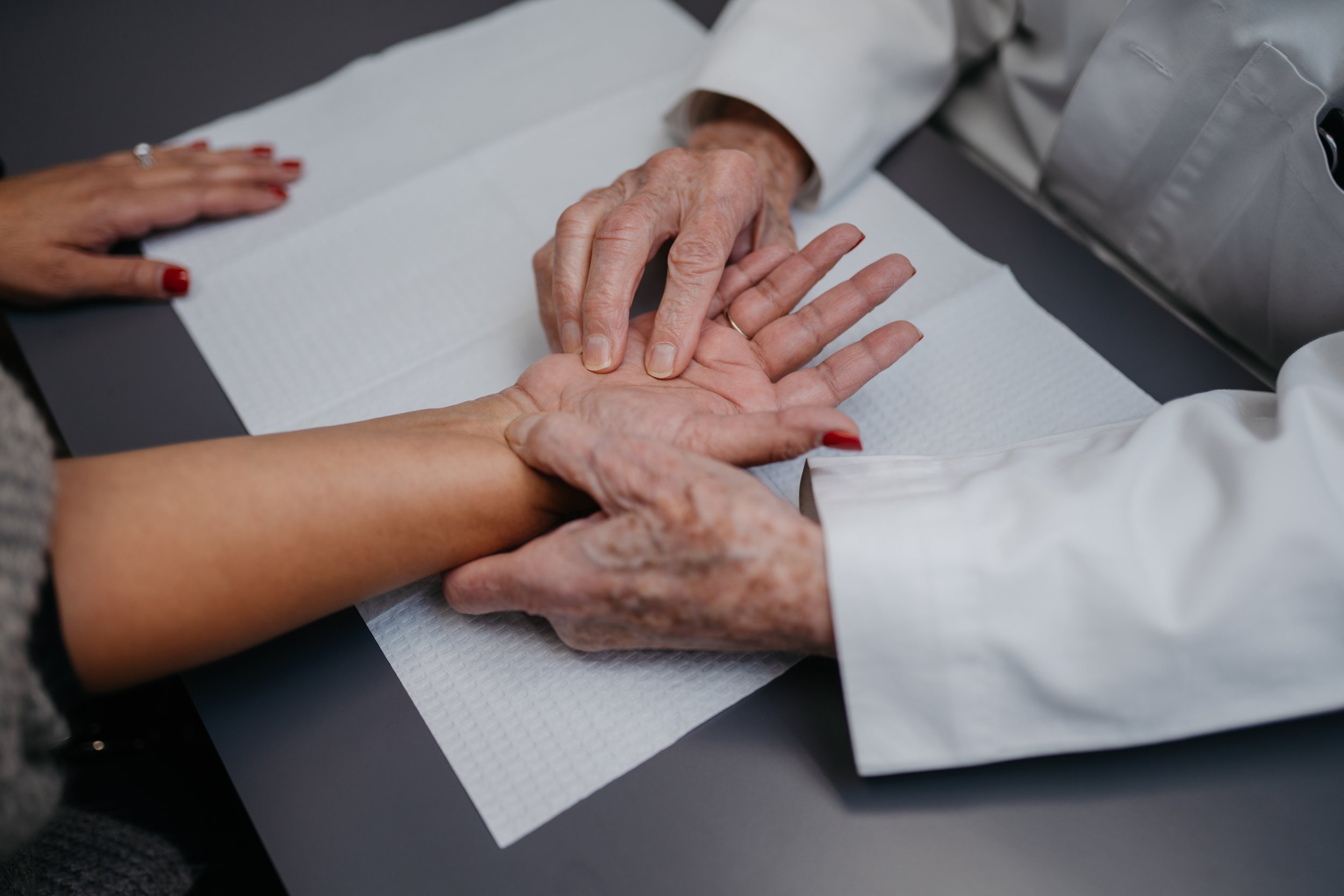

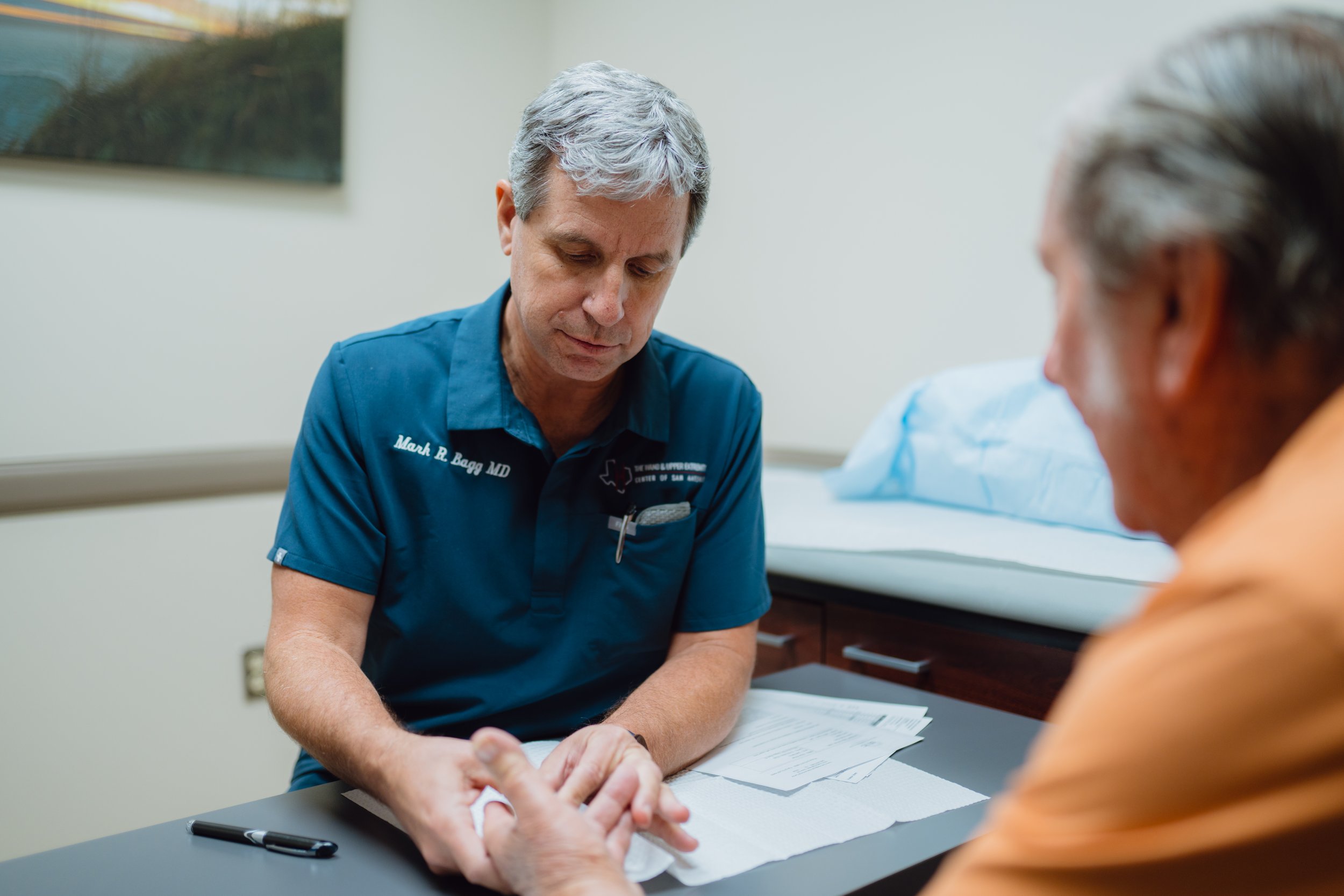
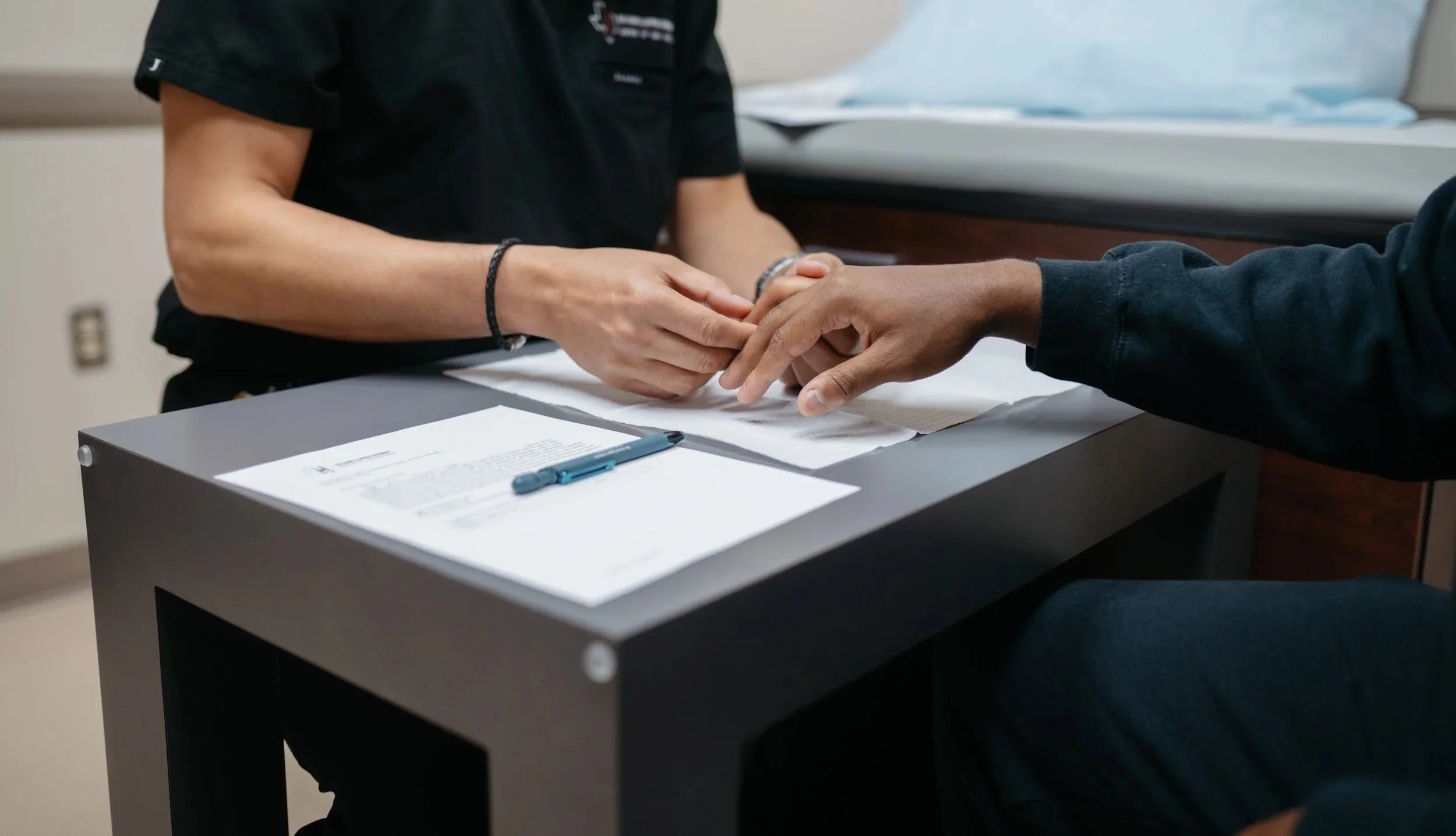
Frequently Asked Questions About CMC Arthroplasty in San Antonio
-
If you have ongoing pain at the base of your thumb, difficulty gripping or pinching, and have tried conservative treatments like splints or injections without relief, you may be a candidate for CMC replacement. A consultation with a hand specialist can help determine the best approach.
-
Some discomfort is expected in the early recovery period, but pain is usually well-controlled with medications. Most patients report that the surgical pain is manageable and improves steadily over the first few weeks.
-
CMC replacement has a high success rate in reducing pain and restoring function. Most patients experience long-term relief and improved hand use after the procedure.
-
Yes. Hand therapy is a key part of recovery. It helps restore range of motion, strength, and fine motor control so you can return to everyday tasks with confidence.
-
As with any surgery, there are some risks, including infection, stiffness, or implant-related issues. However, complications are rare, and our team takes every precaution to ensure a safe and smooth recovery.
why come to The Hand and Upper Extremity Center of San Antonio for your CMC Replacement?
When you visit us at The Hand and Upper Extremity Center of San Antonio, you will find a fine-tuned team ready to take care of you. Your physicians have over 100 years of collective experience and represent multiple generations and training backgrounds. In addition to your surgeons, you may meet one of our hand surgery fellows. Each fellow is a fully trained orthopaedic or plastic surgeon who has completed 5 to 7 years of surgical training after graduation from medical school and has chosen to spend an additional year in training to study hand surgery. In addition to the physicians, you will meet various staff members. From the front desk staff and Medical Assistants (MA’s) to the x-ray and cast technicians, each is committed to taking care of you.
Meet Our Physicians
-
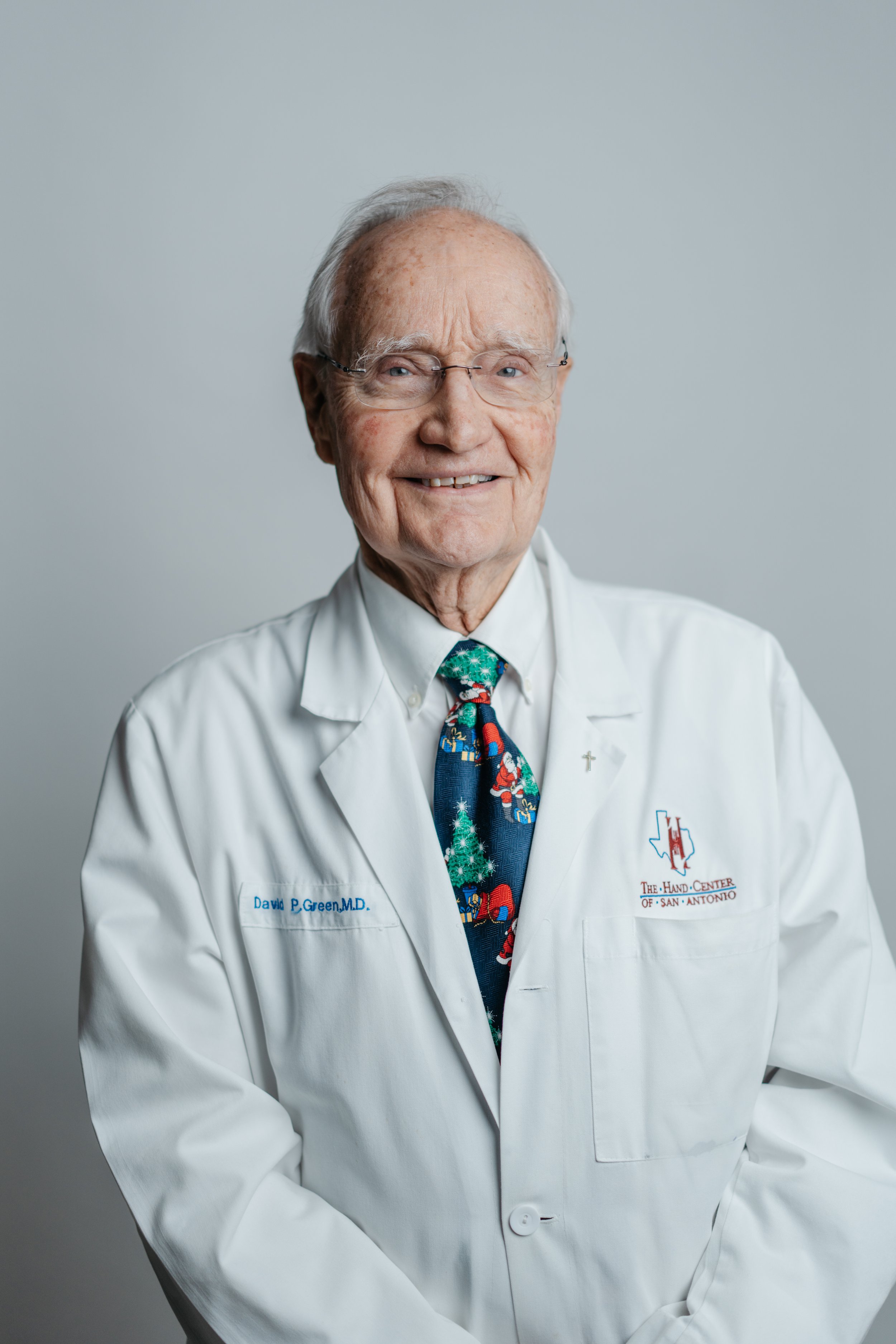
David P. Green, M.D.
-

Mark Bagg, M.D.
-

David W. Person, M.D., F.A.C.S.
-

Ramesh C. Srinivasan, M.D.
Other hand & wrist Related Issues we can help with
Did you know we offer in-house therapy?
Hand therapy is a merging of occupational and physical therapy theory and practice that combines comprehensive knowledge of the structure of the upper limb with function and activity. Using specialized skills in assessment, planning and treatment, hand therapists provide therapeutic interventions to prevent dysfunction, restore function and/or reverse the progression of pathology of the upper limb in order to enhance an individual’s ability to execute tasks and to participate fully in life situations.
check out our latest blog posts regarding Hand & Wrist injuries
